Vintage Recipe Roulette: Sauerkraut Cake from 1975
I warned you when I made the Chex Reuben Surprise, so if you're reading this, you've only got yourself to blame.
Remember this from a couple of weeks ago? I warned you that there was canned sauerkraut leftover from the Ralston-Purina Chex Reuben Surprise, and I bagged it up for freezing so that it would remain technically edible, because I had another recipe in mind.
Admittedly, I was also hoping that freezing would literally soften its blow for this week’s foodhardy experiment, the Sauerkraut Cake from Talk About Good, my grandmother’s 1975 Methodist church community cookbook.
There’s a lot to like here. It’s almost a pantry recipe, without milk, for example, and there’s a lower sugar to flour ratio than most cakes. You can’t go wrong with mocha frosting, and this one has rum in it!
But then…there’s the sauerkraut. Grated zucchini is one thing, and I liked the Moist Lettuce Bars okay. I love using up leftovers in creative ways to reduce food waste, and I get that adding vegetable matter can help improve texture especially the next day, but this might be a fermented cruciferous bridge too far even for me.
Here are the main ingredients for the cake, minus the water and vanilla:
I’m just making half the recipe, and I’ll also be using some CocoWhip I have left from my last gelatin-based nightmare for the frosting, instead of whipped cream, but otherwise I’m following the instructions. (How do I do 1 1/2 eggs? One egg plus 2 T egg white from a carton.) I’m also using regular Dutch cocoa instead of my fancy Valrhona stuff. I want to know how the sauerkraut does without any cheating.
And on that note, if you read the instructions carefully, you’ll see that the secret to making this unlikely sounding recipe taste great is that you never actually add the sauerkraut! Genius!
Okay, okay…like most community recipes, you have to read between the lines. The instructions here are actually pretty good (hooray for rinsing the sauerkraut), but I’m sure you are supposed to add the sauerkraut to the wet ingredients, and that’s what I’ve done. The batter mixes up into an almost pudding-like, jellied texture. If you pretend the weird little lumpy bits are coconut, it looks pretty awesome!
Once baked and turned out for frosting, you can really see the sauerkraut bits even though I gave them an additional chop. I’m concerned I should have been more thorough, but it’s my own fault.
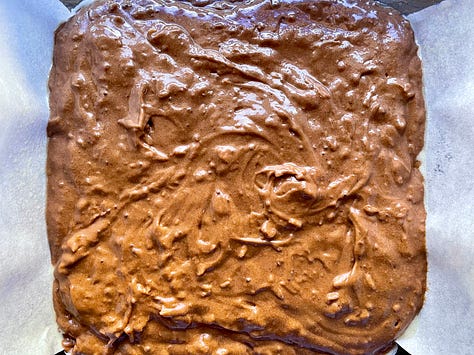
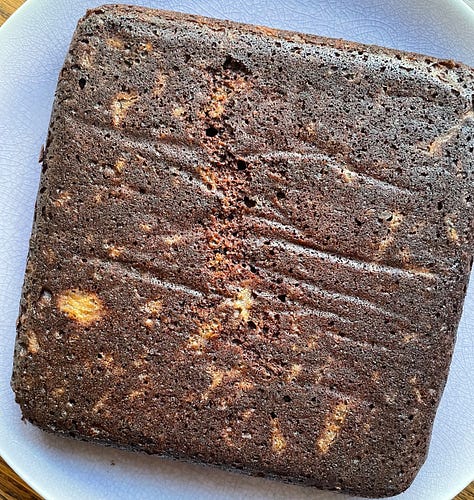
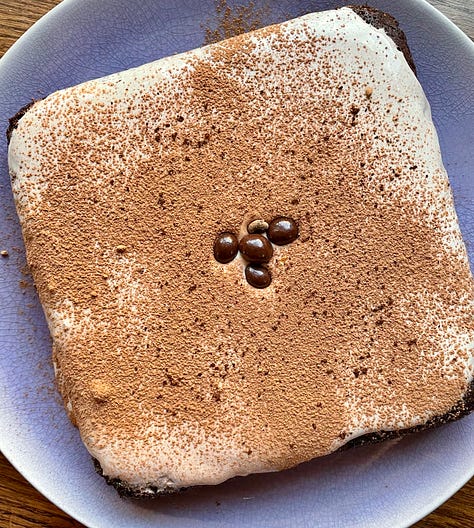
The frosting is just whipped cream (I’ve got CocoWhip), cocoa, instant coffee, and rum. It is deeeeeeelicious, but…it turns out CocoWhip doesn’t play nicely with acid and/or alcohol. It’s quite thin, but still creamy and truly yummy — I actually think the faint coconut flavor adds. My little subs usually work, but if you make this frosting, use whipped cream, or maybe try a couple of drops of rum extract in your plant based whip instead of alcohol.
Here it is all plated up, and as you can see, there is a big ol’ piece of sauerkraut right there, front and center. I can practically hear it taunting me, and I am really concerned about tasting this. I’m hoping the rinsing did some heavy lifting.
So, I actually can’t taste the sauerkraut at all. There might be just a tad of brightness to it that isn’t usually there? Another thing that isn’t usually there because it definitely should not be are these occasional passing sensations of something like strings or fibers in the cake. It is not pleasant. If I didn’t know exactly what they were, I might be concerned that it was, you know, rat hairs or weevil wings. It’s uncool.
If stringy cake sounds rad to you, add coconut.
As for its good qualities, I think this cake is tailor-made for ice cream. It has a really sturdy texture, and it’s lightly sweet as I suspected. Although more whipped frosting would help, I actually really like the spots where my CocoWhip stuff sort of melted in, and I think gently melted ice cream on top would really lean in to that loveliness. It’s also still really moist the next day.
But honestly…don’t make this cake. There are tons of zucchini and pumpkin/butternut chocolate cakes that work really well and provide similar or even better nutritional value. Add your leftover sauerkraut here and there to sandwiches, vegetable soups, and things like pork chops with apples.
If you want the best chocolate cake ever, though, I recently tried this very popular one from Add a Pinch, and y’all…it is absolute heaven. It aaallllllmost rivals Kassie Mendieta’s Olympic Chocolate Muffins, but it’s a lot easier. The secret is that you add boiling water to the batter while it’s mixing. It does something really interesting to the texture, and although I’ve never seen it in a cake recipe before (Wacky Cake uses warm water to make sure it rises and bakes before falling, but not boiling water), it’s similar to an Asian method of ensuring pillowy baked goods by starting with a paste of flour and hot water — tangzhong or yakone.
I didn’t take a good photo, but it was so good that my husband texted me in the middle of the day that he was counting the hours until he could come home and have more of it. I used a different frosting when I made that one, too — I love a little tang and am always looking to cut a few calories when I can do it and still preserve great flavor, so I often wing chocolate icing by whipping softened butter and Neufchatel cheese (it’s like a lower fat cream cheese) with some melted chocolate and powdered sugar, and then chill it a bit. It’s similar to this one from The Loopy Whisk, and she’s right about mixing everything at once. You’ll be rewarded with a fudgy, zingy frosting.
I really want to commend Robyn Stone from Add a Pinch on that innovative recipe, and her perfect instructions. Also, she left out the sauerkraut. Great call.
Need food first, picky eater-friendly, non-judgmental help with nutrition? You can schedule an appointment with me through Nourish here. I see lots of diabetes, neurodivergence, allergies and GI conditions, autoimmune and inflammatory disorders, and weight management whether for increase or decrease — adults, teens, and kids. We take most insurance, and most often, the copay is $0.
Zen and the Science of Candy Corn is a reader-supported publication that brings me great joy. You can literally give me your 2 cents with the tip jar button below!
Thanks so much for reading! But if you decided to subscribe, free or paid? Well, only if you can spare the cabbage.
And feel free to share this post with any stringy cake-loving psychopaths you know.

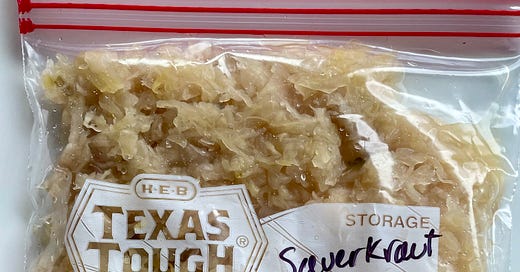





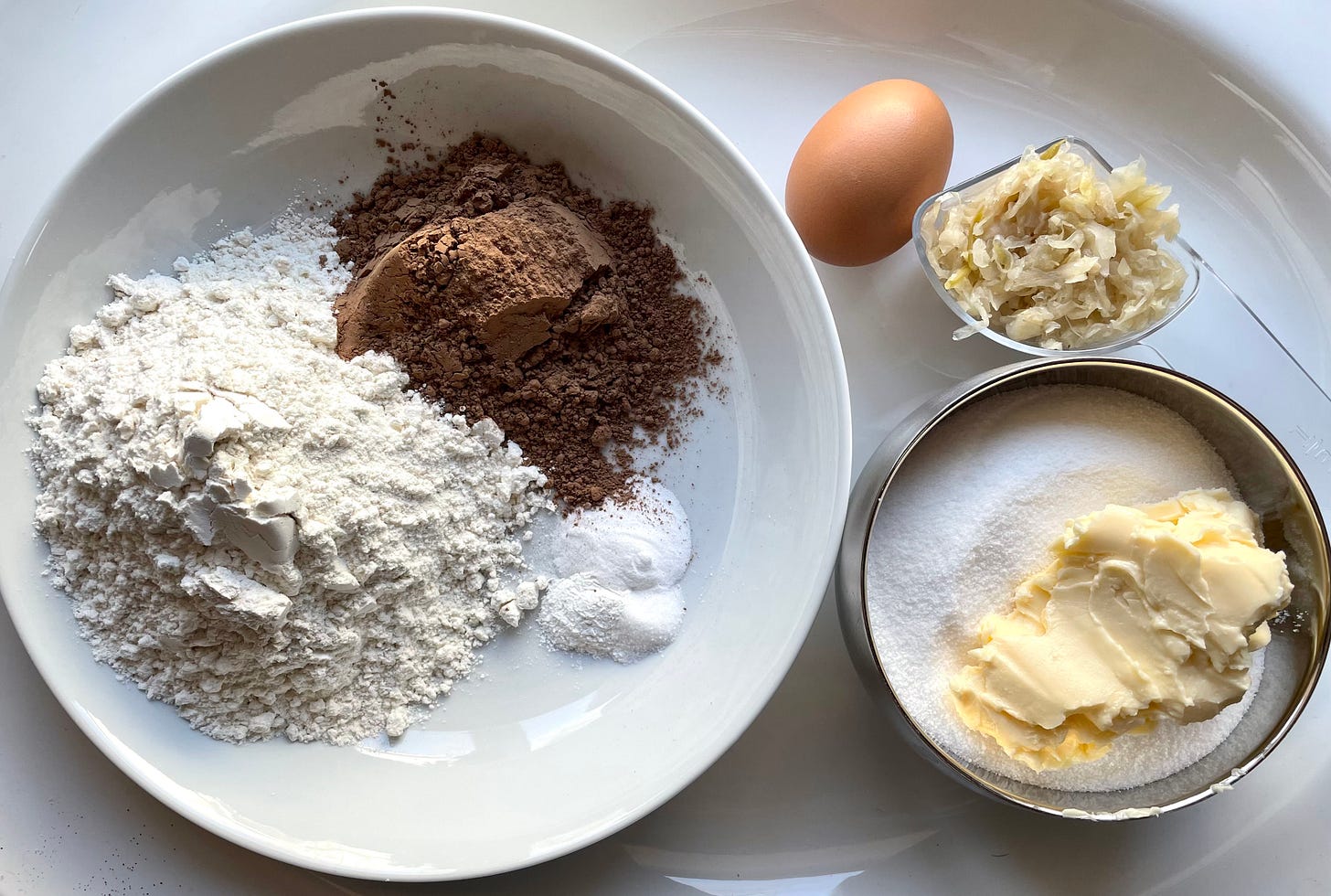
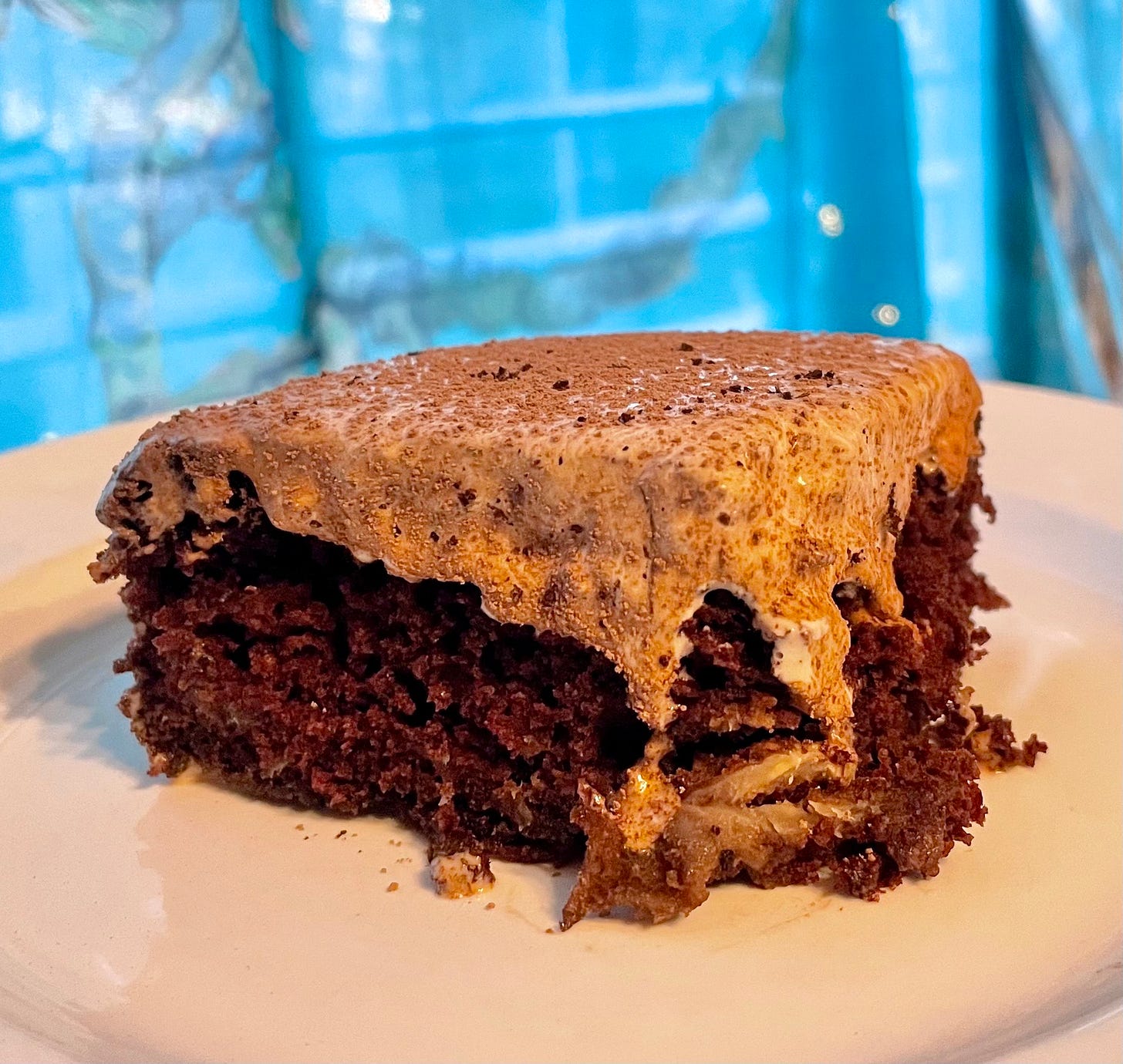
I always read your posts, and I always laugh. Thanks again.